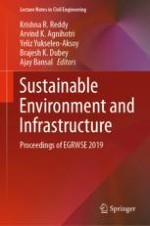This volume contains selects papers presented during the 2nd International Conference on Environmental Geotechnology, Recycled Waste Materials and Sustainable Engineering, held in the University of Illinois at Chicago. It covers the recent innovations, trends, and concerns, practical challenges encountered, and the solutions adopted in waste management and engineering, geotechnical and geoenvironmental engineering, infrastructure engineering, and sustainable engineering. This book will be useful for academics, educators, policy makers and professionals working in the field of civil engineering, chemical engineering, environmental sciences and public policy.
